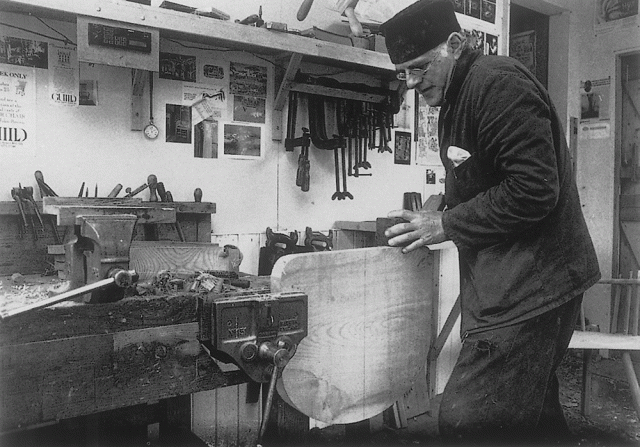
This is an excerpt from “Welsh Stick Chairs” by John Brown.
Having cut out the seat, the first job is to clean up the sawn edge. Here is a wooden jack-plane in use. I very rarely buy new tools. They are expensive and mostly made of cheese. A plane like the one I am using costs about £10, and the blades are thicker and made of much superior steel, either cast or laminated. Put an edge on that and it will last several times longer than a new iron for a modem plane. There are many good dealers who sell old tools. I often find interesting items on market stalls.
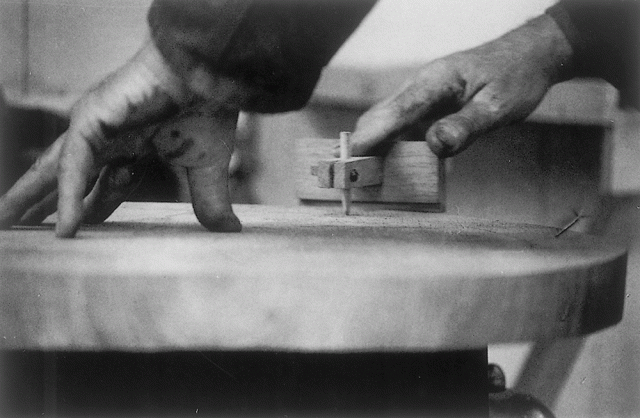
Having cleaned the seat up, I have to decide which is the top and bottom. Only experience can tell me this. What I am trying to do is get a good ‘picture’ on the completed seat, a nice grain pattern. As it has to be scalloped out, this is not always easy to tell. I mark the top and bottom with a pencil line 2″ from the edge. The marker gauge is a simple oak tool that one of my sons made many years ago.
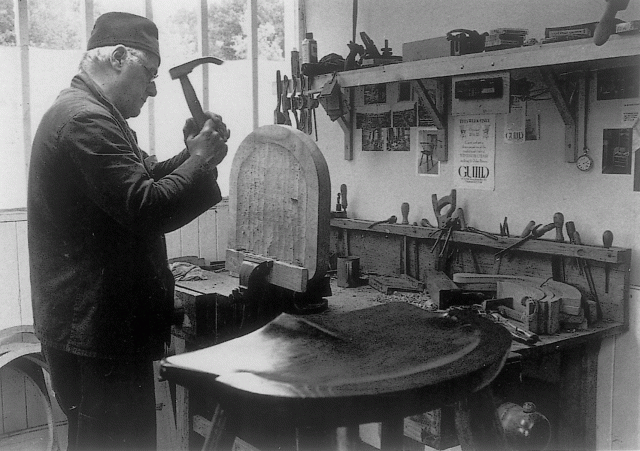
A sculptor’s adze in use to ‘bottom’ the seat. This is not a traditional way of doing this. I have and can use the full size gutter adze. However, if you look at the average dining-chair seat you will notice very gradual curves and probably a maximum depth of 1/2″, possibly only 3/8″. I like to cut in from my pencil line at a much sharper angle, and by using a small adze I can more easily control this. Also, I leave less to do with the finishing tools.
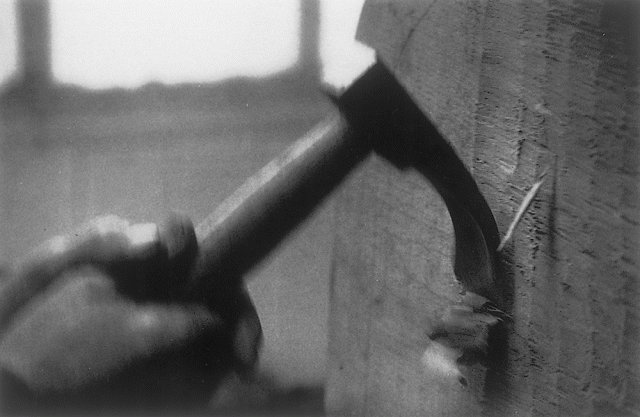
The small adze has a curve across the blade. It is used across the grain, and several passes must be made to achieve the right depth. All wood of the same species varies. An oak on a hill, in a valley, parkland oak, oak grown in windy conditions; they are all a bit different. None varies more then elm. Even a different part of the same tree can have totally different characteristics. I recall sailors talking about a ‘soldiers’ wind – blows both ways at once. Well, the grain in elm is similar. This is a nice piece and is behaving well.
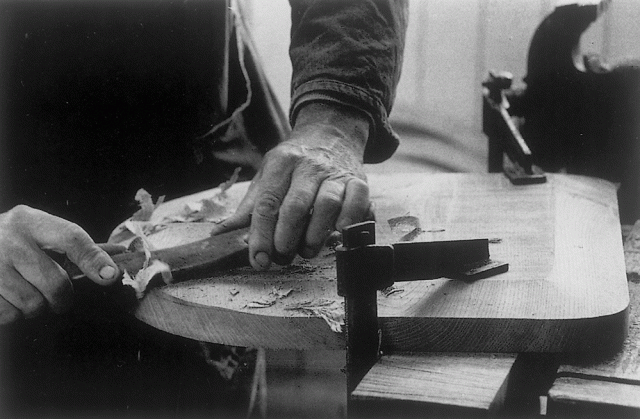
Chamfering the underside of the seat. This is one of the ways of taking the chunkiness out of the seat. Sometimes I round the bottom, some chairs I leave the edge at its original thickness, just taking off the arras top and bottom. All this is purely for appearance, and I go through phases, sometimes favouring one way, sometimes another. I have to do this part after chopping as otherwise the seat is difficult to hold in the vice.
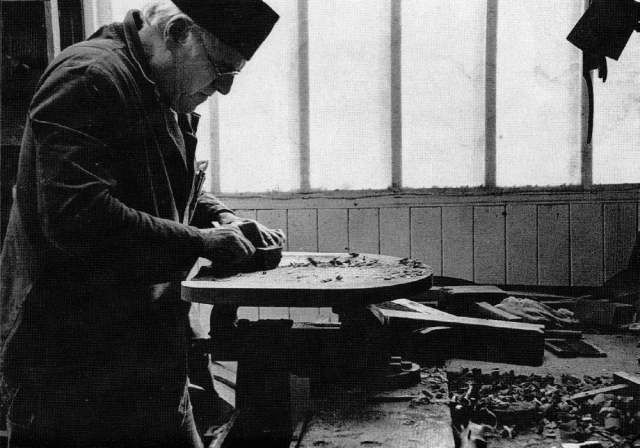
I screw a block of wood under the seat to hold it in the vice. The tool I am using here is a small ‘round both ways’ plane with handles. This again is a home-made tool. Chair-makers traditionally used travishers. Travishers are very hard to come by. I suspect this is because most of them are hanging neatly on the walls of the High Wycombe chair museum, or, because of their scarcity, are in collections. I abhor this situation; tools are for use. On the three visits I have made to the chair museum at Wycombe, I have been the only visitor, and I stand with mouth watering looking at literally dozens and dozens of travishers. Such is life. My tool works well, however.
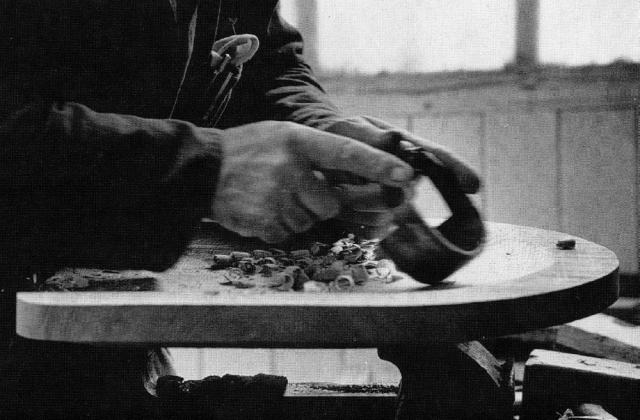
The next stage in smoothing the seat. This is a scorp. It’s a drawknife bent to a semi-circle and is really a cooper’s tool. The scorp has a bevel on the outside, so it is reasonably easy to grind and sharpen. I find that for this work an engineer’s vice bolted on top of the bench is essential. All the work is at a reasonable height, and my back does not suffer. I line the jaws with wooden blocks, and there is hardly a job in chair-making in which I do not use this vice.
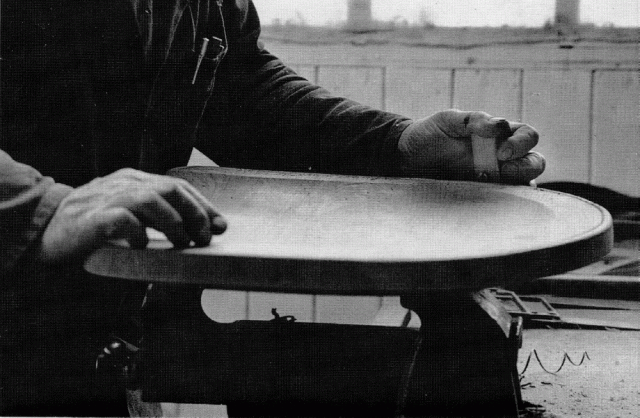
I decided to put a bead around this seat. I don’t know why. It was quite unnecessary. I am using a block of wood with a screw protruding about 3/8″. The edges of the screw head are filed sharp. Of 400 or so chairs I have built I have perhaps beaded a dozen. On this chair it looks alright, but it would have been just as alright without it. There’s a lesson here somewhere.
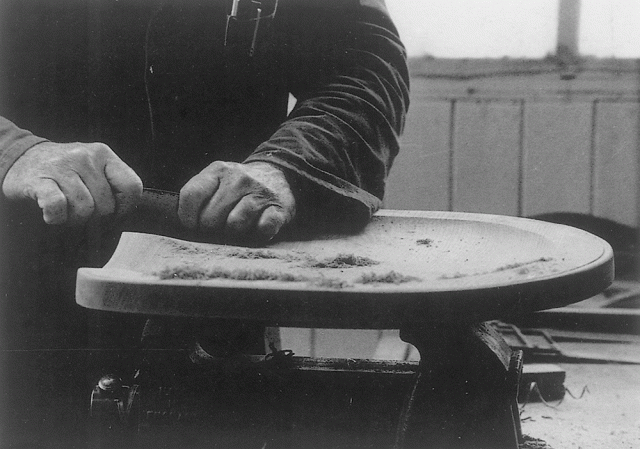
God forbid that I should ever have a fire in the workshop, but if I did, and had to get out in a hurry, I’d make sure my dumbscrape was in my pocket. This is a magical tool. Called a cabinet scraper in the tool catalogues, it is sharpened to have a wire edge with a burnisher of hard steel. It cuts like a plane – see the curly shavings on this seat. When they come from the shop they are oblong, square-sided. For this kind of work the edges need grinding to a gentle curve. It is a most pleasing business using a scraper.
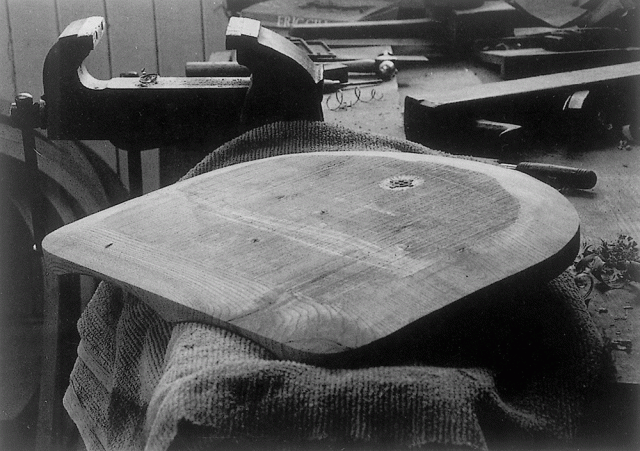
Ah, man’s vanity! This is the signature I put on all my work. I did it. Well, I did part of it. I have a partner – the Great Chair-maker – so I put a cross, as we Celtic people see it. There is no point in smoothing the underside of the chair. It does not show unless the chair is turned upside down, and working with hand-tools only, one tends not to spend time on unnecessary things.
— Meghan B.